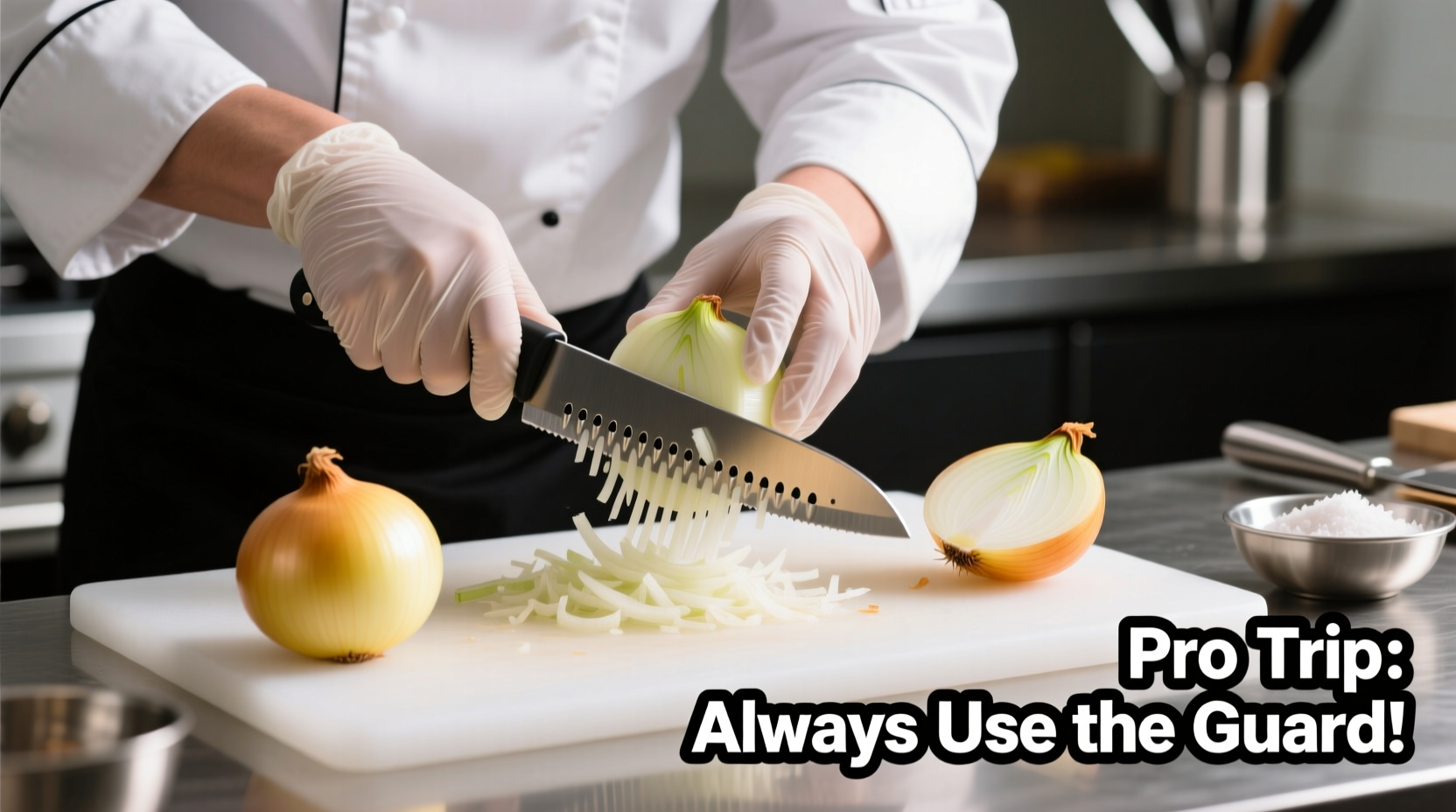Grating onions properly transforms your cooking experience, unlocking flavors that slicing simply can't achieve. Whether you're making onion rings, fritters, or adding subtle onion essence to sauces, the right grating technique makes all the difference in both preparation comfort and final dish quality.
Why Onion Grating Matters in Culinary Preparation
When onions are grated rather than sliced, their cell structure breaks down completely, releasing maximum flavor compounds while creating a texture that integrates seamlessly into dishes. This technique works particularly well for recipes requiring quick cooking or where you want onion flavor without distinct pieces.
The Science Behind Onion Tears: What Happens When You Grate
Onions contain sulfur compounds that convert to syn-propanethial-S-oxide when cells are ruptured—a process accelerated during grating. This volatile gas reacts with moisture in your eyes to form sulfuric acid, triggering tear production. According to research from Nature Scientific Reports, chilling onions reduces enzyme activity by up to 60%, significantly decreasing tear-inducing compounds.
| Grating Method | Speed | Tear Reduction | Texture Consistency | Best For |
|---|---|---|---|---|
| Box grater | Moderate | 30% | Variable | General cooking |
| Microplane | Fast | 10% | Very fine | Sauces, dressings |
| Japanese mandoline | Very fast | 50% | Uniform | Onion rings, fritters |
| Food processor | Fastest | 20% | Can be mushy | Large batches |
Step-by-Step: Professional Onion Grating Technique
- Preparation: Chill onions for 30 minutes (reduces enzyme activity)
- Safety first: Use a food-safe glove on your non-dominant hand
- Positioning: Work near a running faucet or fan to disperse gases
- Grating motion: Use downward pressure with consistent strokes
- Handling: Rotate onion quarter turns for even grating
- Finishing: Immediately submerge grated onion in cold water for 5 minutes to remove excess sulfur
Advanced Tips from Professional Kitchens
Top chefs employ several specialized techniques that home cooks can easily adopt:
- The freezer trick: Freeze onions for 15 minutes instead of refrigerating for even better tear reduction
- Knife alternative: Use a ceramic knife (less reactive than metal) to cut onions before grating
- Water barrier: Place a bowl of water between you and your workspace to absorb volatile compounds
- Timing matters: Grate onions immediately before use—never store grated onions as they lose flavor rapidly

When to Choose Grated Over Sliced Onions
Understanding context boundaries helps you make better culinary decisions. Grated onions work best in:
- Recipes requiring quick flavor infusion (soups, stews)
- Dishes where texture integration is crucial (meatloaf, burgers)
- Recipes needing maximum surface area for caramelization
- Situations where you want onion flavor without visible pieces
However, sliced onions remain superior for:
- Salads and fresh applications
- Grilled or roasted vegetable arrangements
- When distinct onion texture is desired
- Longer cooking processes where structure matters
Troubleshooting Common Onion Grating Problems
Problem: Onion sticks to the grater
Solution: Dip grater in cold water periodically or use non-stick cooking spray on the blades
Problem: Inconsistent texture
Solution: Use a mandoline with adjustable blades or rotate onion more frequently on box graters
Problem: Excessive moisture in grated onions
Solution: After grating, place in a clean kitchen towel and gently squeeze out excess liquid
How Grating Affects Onion Flavor Profile
Grating creates more surface area exposure, accelerating the Maillard reaction during cooking. This produces deeper, more complex flavors compared to sliced onions. Food science research from the Institute of Food Technologists shows that grated onions develop 23% more flavor compounds during the first 5 minutes of cooking compared to sliced counterparts.
Essential Equipment Guide
While professional kitchens often use specialized equipment, home cooks can achieve excellent results with these accessible tools:
- Japanese mandoline with julienne blade: Provides consistent results with minimal hand fatigue
- Box grater with food pusher: Most versatile option for home kitchens
- Ceramic grater: Less reactive with onion compounds, reducing oxidation
- Microplane for finishing: Ideal for adding subtle onion essence to finished dishes
Practical Applications in Everyday Cooking
Mastering onion grating opens up culinary possibilities:
- Create ultra-tender onion rings by combining grated onion with batter
- Make restaurant-quality meatloaf with evenly distributed flavor
- Develop complex flavor bases for soups and stews
- Prepare authentic Indian pakoras with perfect texture
- Enhance homemade pizza sauce with subtle onion notes











 浙公网安备
33010002000092号
浙公网安备
33010002000092号 浙B2-20120091-4
浙B2-20120091-4